
Factory farming conditions and antibiotic-resistant pathogens emerging as a result of them pose an existential threat to humans in the form of zoonotic diseases. Why it’s time to produce and consume food more thoughtfully.
Eating seasonal fruits and vegetables is crucial for our health and that of the environment. Following their natural life cycle, fruits and vegetables have more nutrients and active substances, along with more intense taste and aroma. Here’s a list of the best foods in season in September. Figs Now it’s time for “forniti” figs that
Eating seasonal fruits and vegetables is crucial for our health and that of the environment. Following their natural life cycle, fruits and vegetables have more nutrients and active substances, along with more intense taste and aroma. Here’s a list of the best foods in season in September.
Now it’s time for “forniti” figs that ripen from August to September, and shortly will be time for “tardivi” (literally late figs) or “cratiri” or “cimaruolo”. Figs contain a lot of water (over 80 percent), soluble glucides, fiber (47 Kcal per 100g), vitamins A and C in profusion, potassium and phosphorus. They are mineralizing, energetic and restorative. Scientists confirmed its anti-cancer properties.
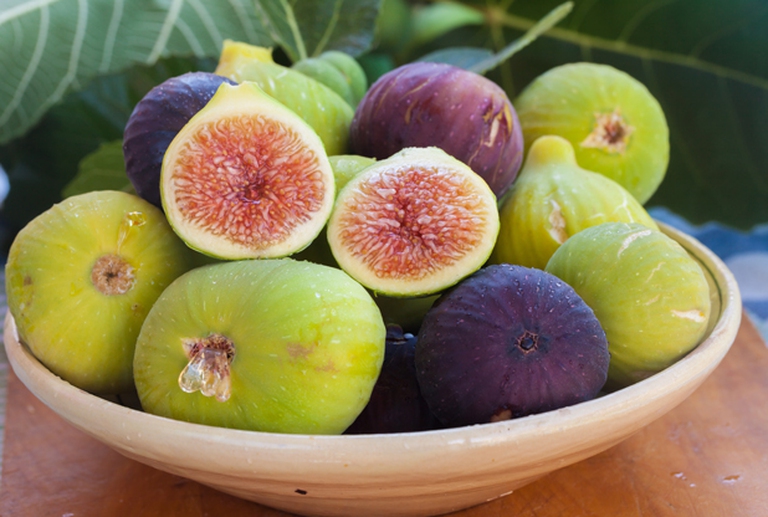
The amount of sugar in grapes (150 grams per kilo) shouldn’t be cause for worry: it includes glucose and levulose, two types of sugar that can be directly assimilated and are also suitable, in small amounts, even to people who suffer from diabetes. This fruit is high in vitamins A and B1, it contains vitamin PP and C and a lot of mineral salts including manganese, calcium, magnesium, potassium, iron and sodium. It stimulates the hepatic action, detoxifies and mineralises the body and tackles anaemia. By chewing a grape with its seeds you will benefit of the effects of a natural anticholesterol.

Prickly perars produce juicy fruits that help regulate intestinal functions, keep the GI under control, increase the sense of satiety, provide antioxidants and naturally fight stress. The jelly substance contained in the cladodes scars over and in ancient times it was taken to cure ulcer and gastritis.
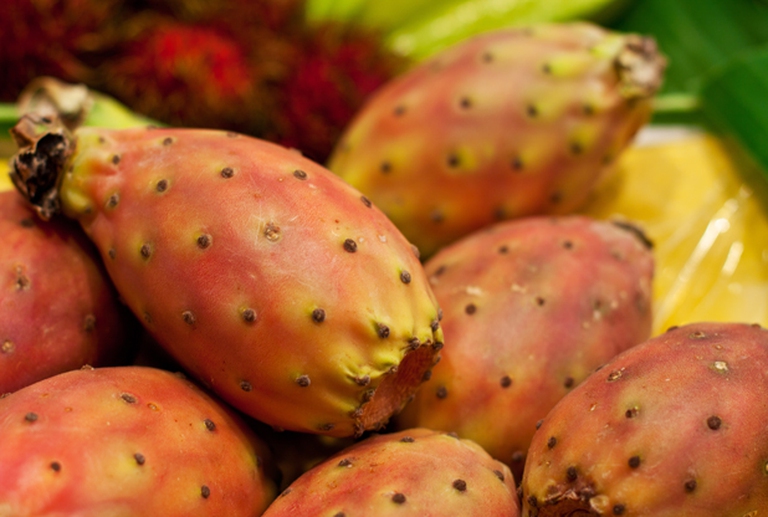
This fruit is a great source of antioxidant and anti-cancer agents. Pectin, mostly contained in the core and skin, lowers cholesterol levels in the blood. Scientists discovered that eating a whole apple has a more positive effect on our body than exclusively taking in the active ingredient. This is because pectin’s effect combines with vitamin C and the other substances contained in the fruit, including the aroma. The beneficial ingredients of apples are mostly found in its skin: so, choose organic apples and don’t remove the skin.
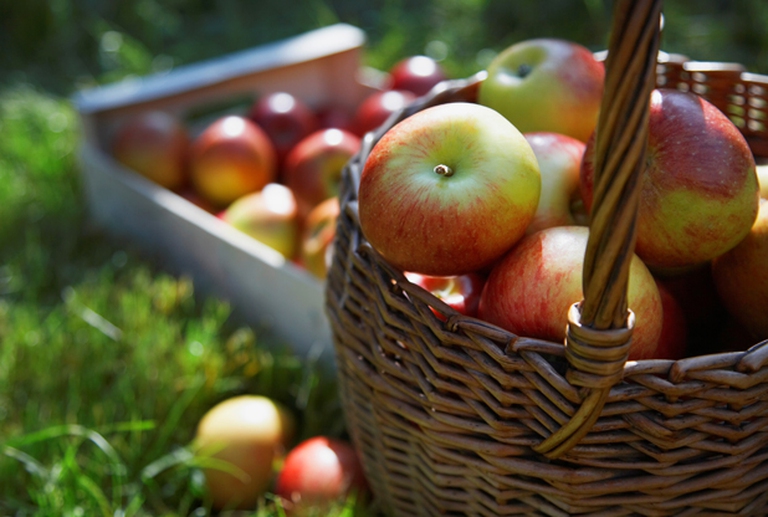
Rich in anticholesterol pectin, pears are better to be eaten ripe: they are more easily digestible and don’t swell the stomach. They contain fibers that help regulate the intestines and function as natural antioxidant. Thanks to their large amount of fructose, they bring energy and sense of satiety. Pear juice lowers the body temperature, so it is the perfect beverage when we have a fever. The presence of boron in the fruit helps tackling osteoporosis-related damages. Pears are rich in potassium and contain vitamin C and fibers.
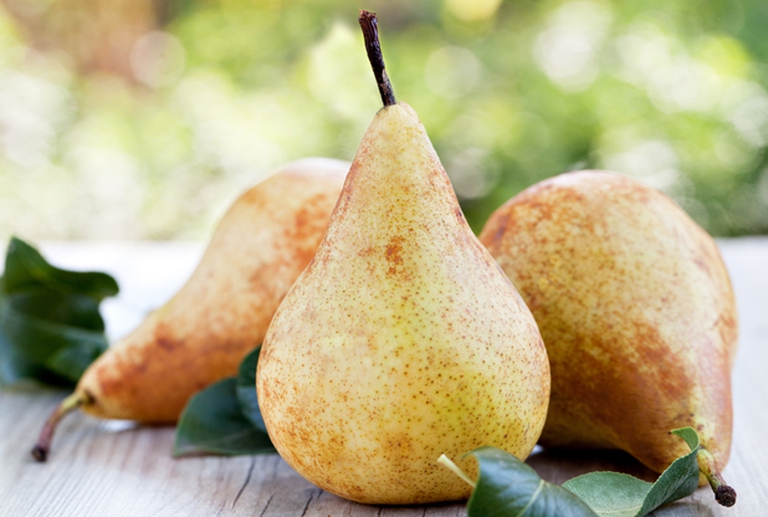
Elberberries are edible when dark purple and ripe because, when they’re red and still unripe, they contain toxins. They contain 79 per cent of water, carbohydrates, protein and are also high in potassium, calcium, sodium, phosphorus, iron, magnesium, copper, zinc and manganese. They also contain group B vitamins, vitamins A and C, tannins. Elderberries are a treasure trove of flavonoids, anthocyanins, polocaine, citric, malic and folic acids. They have diuretic, laxative, diaphoretic, antirheumatic, antineuralgic and anti-inflammatory properties.
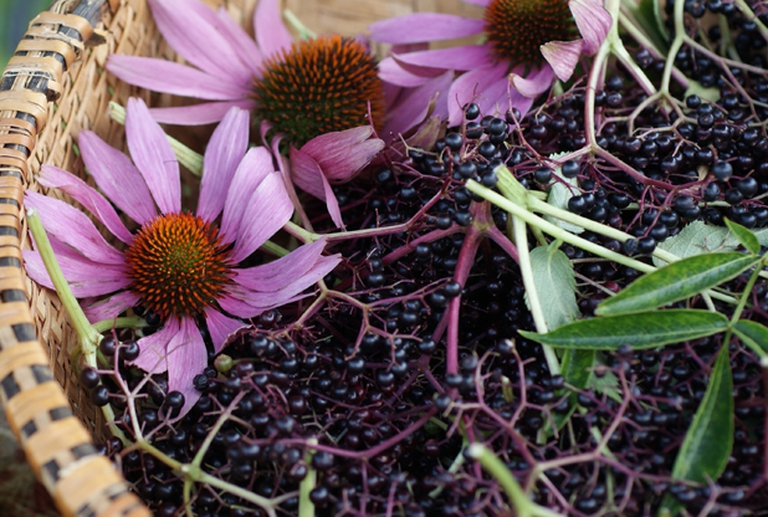
Beans are nutritious legumes rich in vitamin A, B, C, and E as well as potassium, iron, calcium, zinc, phosphorus and lecithin, which promotes fat burning, avoiding its accumulation in the blood. All the varieties of beans contain fibers. They are a great source of proteins and an excellent alternative to meat, mostly with cereals.
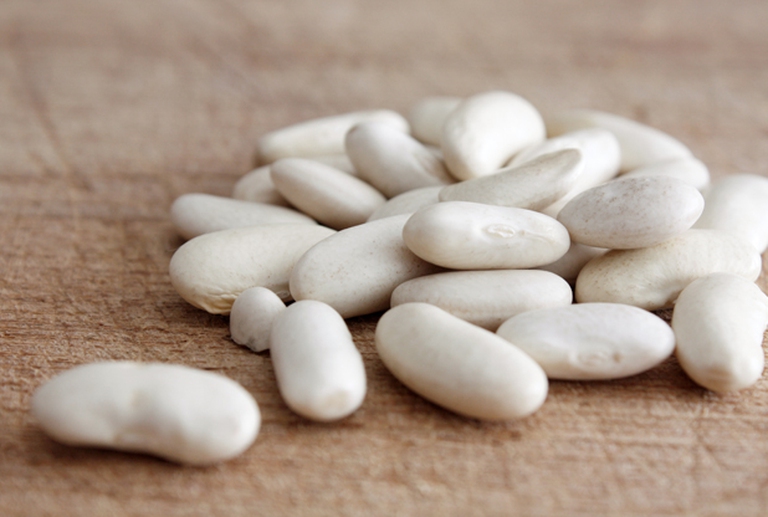
From late August and throughout September cornelian cherries, the fruits of a tree that grow spontaneously in the woods, ripen. Cornelian cherries, similar to small cherries but with an oblong shape, are very high in vitamins, carotene, pectin, tannins, mucilage, fructose and organic acid. They contain more than twice the vitamin C of citrus fruits. Fresh and ripe cornelian cherries are sweet and thirst-quenching; with red cornelian cherries (those that are not completely ripe) you can prepare a delicious jam.

Dates are rich in iron, vitamins, mineral salts and natural sugars. They are very poor in fats and rich in vegetable fibres and group B vitamins and also contain vitamin C. They have a natural anti-inflammatory function and lower cholesterol levels in the blood. They are energising, and excellent at breakfast.

Mushrooms are fat-free and low in calories, suitable for those who follow a hypocaloric diet. They contain phosphorus, potassium, selenium, magnesium, group B vitamins and some antioxidants. They are considered beneficial for the immune system because they maintain a high level of antibodies in the body.
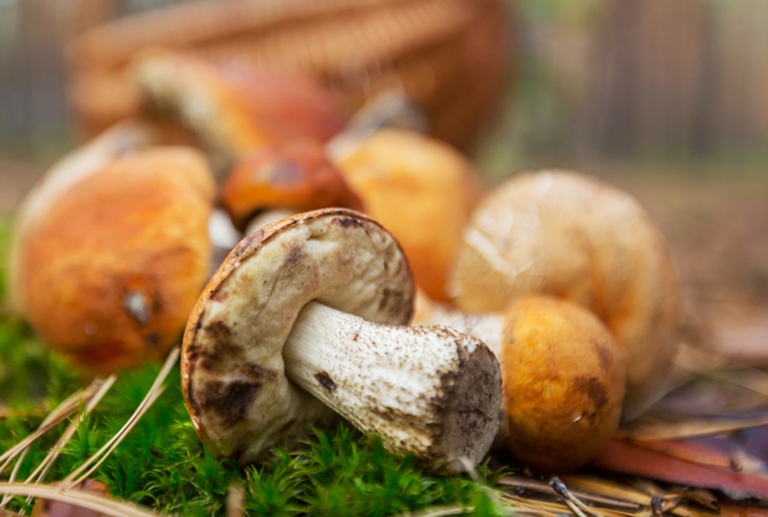
Siamo anche su WhatsApp. Segui il canale ufficiale LifeGate per restare aggiornata, aggiornato sulle ultime notizie e sulle nostre attività.
![]()
Quest'opera è distribuita con Licenza Creative Commons Attribuzione - Non commerciale - Non opere derivate 4.0 Internazionale.
Factory farming conditions and antibiotic-resistant pathogens emerging as a result of them pose an existential threat to humans in the form of zoonotic diseases. Why it’s time to produce and consume food more thoughtfully.
The world of cinema recognises the link between food choices and the climate crisis by offering vegan menus for awards season events, including at the most important of them all: the Oscars.
Let’s look at the reasons behind the growth of veganism in India, as a small yet vocal section of the population turns towards this diet and lifestyle in the largest milk producing country in the world.
by Jeffrey Y. Campbell, Manager of the Forest and Farm Facility at FAO In the Ecuadorian Amazon, Kichwa farmers grow dozens of products on tiny parcels of land. Their lands hum with biodiversity, yielding nutritious foods that have sustained families for generations. Wandering among fruit and nut trees and crops, these indigenous agroforesters fill their baskets
Mint has many health benefits, but in food it’s often accompanied by artificial green colourings. Instead, Galatea has created a green mint ice cream in a completely natural way.
We’re talking about Galatea, a company that produces semi-finished products for artisanal ice creams using high quality ingredients, natural colouring, excluding thickeners and hydrogenated fats, respecting the environment and supporting the less fortunate.
The mad rush to fake food, like fake meat made with genetically-modified soy, ignores the importance of the diversity of our foods and culinary cultures. It’s a recipe to accelerate the destruction of the Planet and our health.
Like with all foods, the quality of an ice cream can be discerned by reading its label. An expert explains how to do this, and tells us how their company steers clear of chemicals, using only natural ingredients to produce an excellent and “free” ice cream.
Quality ingredients, no artificial colouring and hydrogenated fats. These are the main features of a great ice cream. But what makes an ice cream parlour “good”, i.e. sustainable?







